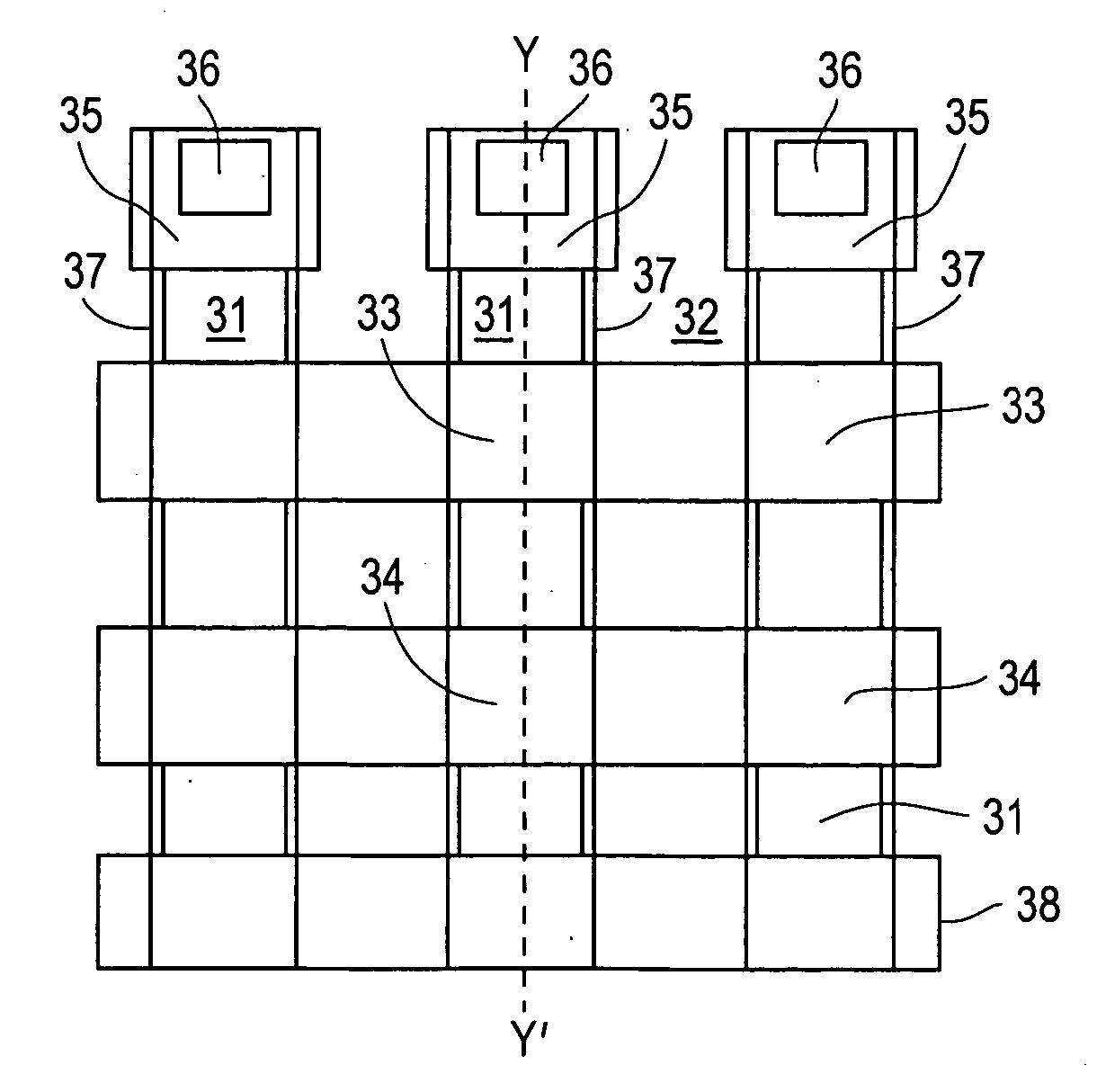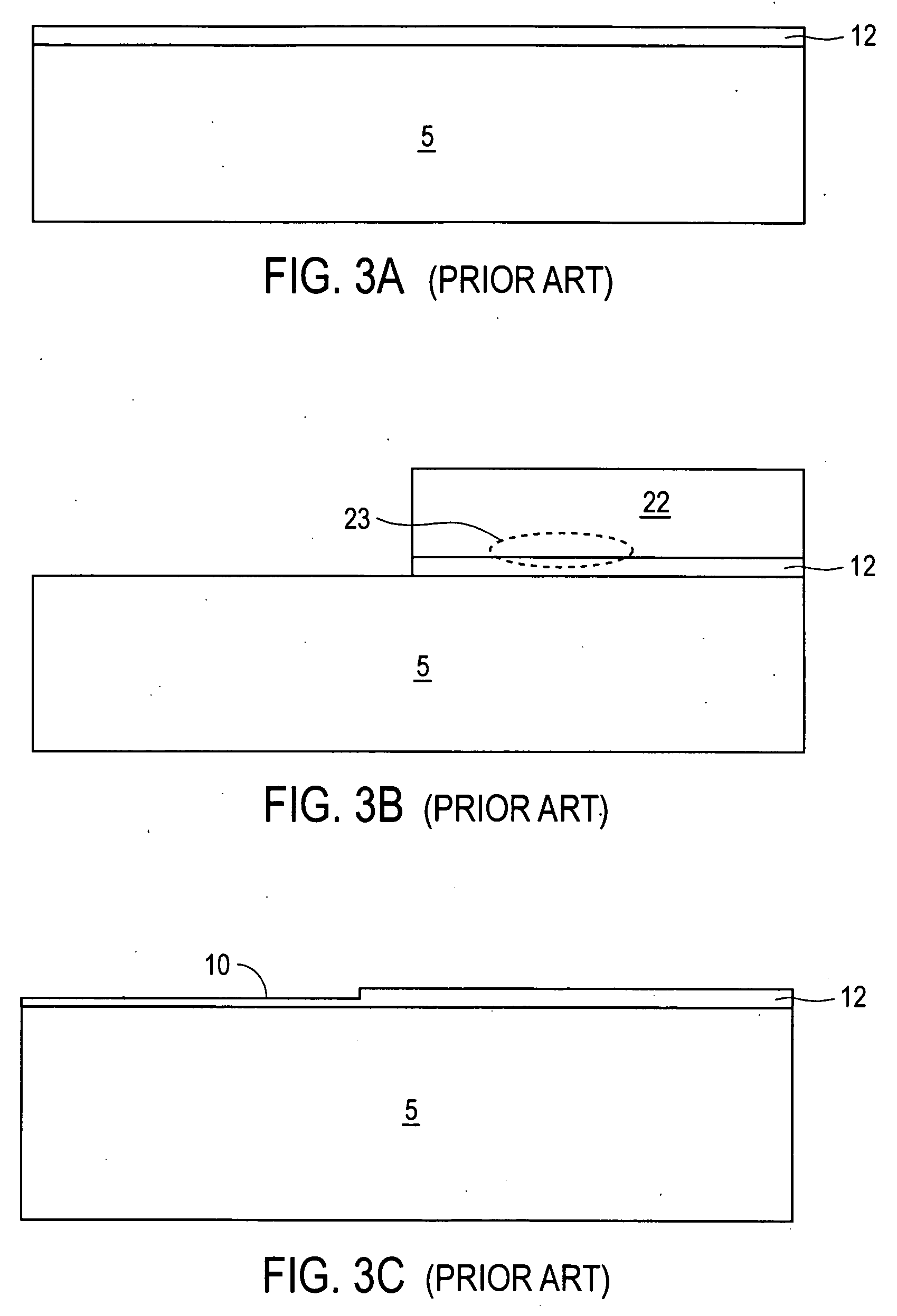One time programmable read-only memory comprised of fuse and two selection transistors
a read-only memory and fuse technology, applied in the field of one time programmable read-only memory, can solve the problems of unnecessarily large cell size of the conventional otprom, thickness complicating the process of fabricating the conventional otprom, etc., and achieves a simple and simple process for fabricating.
- Summary
- Abstract
- Description
- Claims
- Application Information
AI Technical Summary
Benefits of technology
Problems solved by technology
Method used
Image
Examples
Embodiment Construction
[0034]FIG. 4 is a top view of the layout of an OTPROM device formed on a semiconductor wafer, according to one embodiment of the present invention, and FIG. 5 is a cross-sectional view of the semiconductor wafer of a memory cell of the OTPROM device across the line Y-Y′ of FIG. 4, according to one embodiment of the present invention. Referring to FIGS. 4 and 5, the memory cells of the OTPROM are formed on the active regions 31 longitudinally formed on the substrate 41. The active regions 31 are separated by field regions 32 longitudinally formed between the active regions 31.
[0035] Each memory cell of the OTPROM includes a fuse 100, a first selection transistor 102, and a second selection transistor 104. The fuse 100 is comprised of a buried junction layer 40, an insulation layer 61, and a fuse electrode 35. The fuse electrode 35 is located at one end of the active region 31. The first selection transistor 102 is comprised of a drain region 63, a source region 62, the gate insulati...
PUM
 Login to View More
Login to View More Abstract
Description
Claims
Application Information
 Login to View More
Login to View More - R&D
- Intellectual Property
- Life Sciences
- Materials
- Tech Scout
- Unparalleled Data Quality
- Higher Quality Content
- 60% Fewer Hallucinations
Browse by: Latest US Patents, China's latest patents, Technical Efficacy Thesaurus, Application Domain, Technology Topic, Popular Technical Reports.
© 2025 PatSnap. All rights reserved.Legal|Privacy policy|Modern Slavery Act Transparency Statement|Sitemap|About US| Contact US: help@patsnap.com



